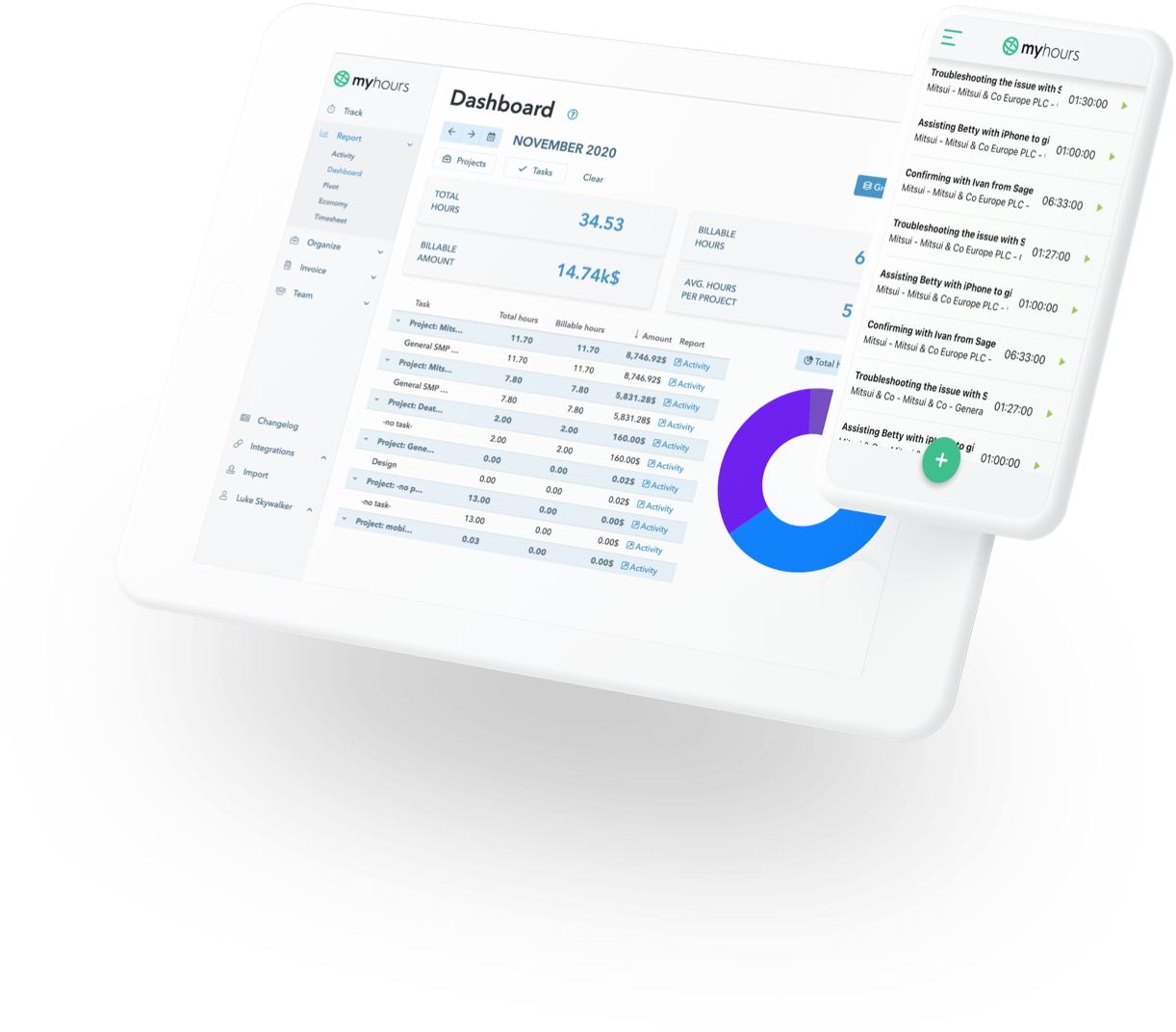Working remotely from home – how to do it right


One of the biggest trends nowadays (especially during and after the COVID-19 pandemic) is remote work.
Remote work means work can be done from anywhere other than the office, i.e. a cafe, a coworking space, an apartment on a beach, or at home in most cases.
At this point it’s worth mentioning that working remotely from home is a special type of a remote work, because you do the work at the same location where you also live and spend your free time.
Considering all the advantages of working from home (beside a few cons because of issues with separating work and home life) it is no wonder that successful companies are increasingly offering this option to their employees.
In this blog post we’ll look at the most important tips and tricks on how working remotely from home should be done properly, what the main advantages are, how to overcome the disadvantages, and whether you as a manager should enable your team to work remotely.
- Why is working from home such a big trend?
- The main advantages of working from home
- 1. Fewer distractions and thus higher productivity
- 2. Adjusting working hours to biological prime time
- 3. Customized working environment
- 4. No Commuting: saves time, money, and the environment
- The enemies of working remotely from home
- 1. Feeling isolated and not separating work time from home time
- 2. Adjusting to online collaboration and team work
- 3. Half Working, half parenting and other distractions at home
- 4. No time-tracking, resulting poor productivity
Why is working from home such a big trend?
A decade ago, working remotely from home was much harder than it is today, if not impossible.
Internet connections were much slower, and collaboration tools and apps lacked many important features; From file sharing to virtual meetings and online brainstorming tools, not to mention accessing everything on a mobile phone, everything was more or less a headache and in the very early stages of development.
The situation is much different today. There are so many quality tools that almost all the important tasks can be done remotely, individually, or in a team. Virtual communication has advanced greatly, and the availability of information and databases is not restricted to the office anymore.
In some cases the work can even be done on a mobile phone which means the workplace can be anywhere you have an internet connection, but most conveniently from home.
This is how flexible types of work have been born. With this flexible type of work, you can setup the best way of working for you as an individual based one the following parameters:
- Working hours (e.g., flexitime)
- Working patterns (e.g., job sharing)
- Working locations (e.g., remote work, flexplace)
There are many different ways you can mix the above-mentioned parameters to achieve different types of flexible work, working remotely from home being just one of them:
- Part-time work – working fewer than the typical 40 hours per week
- Flexitime – keeping flexible when you work during the day
- Compressed work week – performing the weekly full-time hours over fewer days
- Remote work – working from a
location other than official offices
- Home office – working remotely from home
So, these are some of the reasons why working from home is such a big trend: First of all it can finally be done properly (and for a greater range of vocations) because of technological advancements.
Secondly, with flexible work policies you can find the settings that work best for you as an individual (or any other person) to achieve maximum productivity, work/life balance, and satisfaction levels.
It’s a complete win-win situation - on the one hand more happy employees, and on the other higher productivity and greater talent pool for employers.
The main advantages of working from home
Now let’s move to the main advantages of working remotely. As mentioned, there are many which is also why remote work is such a big trend, and why so many people don't want to work unless it's from home.
Here are the four main advantages:
1. Fewer distractions and thus higher productivity
If you work remotely, you can avoid the many distractions frequently imposed on you at the office.
If your brain is trained to work well and focus for several hours, you will be more productive at home compared to if you were to go into the office.
Examples of these distractions are:
- Noise in shared office spaces
- Co-workers stopping by
- Managers interrupting with new demands etc.
2. Adjusting working hours to biological prime time
Another advantage of working from home is being able to adjust your work schedule to the time when your body and brain work best.
Depending on your biological prime time, you might be working from 5 a.m. to 1 p.m., or 9 p.m. to 5 a.m., whatever works best for you and when you are the most productive.
As long as such diverse schedules do not intervene with the business process and the work gets done, many companies allow employees to completely adjust their working schedule to their needs; or, in some cases, the companies define some core hours (1 – 2 hours) when all employees must be present online, and all the rest is flexible.
The liberal approach to working time and working space leads to success in most cases, if done the right way, and if employees can work at their biological prime time.
3. Customized working environment
Some people like their work environment sterile, and some like it messy. To produce creative ideas, work efficiently, and achieve success you need an office setup that perfectly suits you and your aura.
A company cannot buy desks or chairs (and even IT equipment) according to each employee’s wish, and personal decorations can ruin the architectural design of the offices.
No matter how friendly and cozy your offices are, your home office – or a sofa – is probably much cozier. One really big advantage of working remotely from home is that you can arrange your home workspace as it suits you best.
4. No Commuting: saves time, money, and the environment
Commuting every day can take an enormous amount of time, money, and energy. Even if you only work from home part-time and do not commute to the office every day, the savings from not having to do so accumulate over time .
These savings are in your advantage (time, money), the advantage of your employer (office space, commuting costs, …) and the entire human race (carbon footprint). It’s a compete win-win-win situation.
Electricity, heating, and equipment costs in your household will probably rise a little bit when working from home, but you can probably agree with your employer to reimburse these costs and thus build a higher reputation for the company.
The enemies of working remotely from home
As with everything in life, working from home also has its disadvantages and challenges.
All the advantages absolutely overweight the cons, but nevertheless the knowledge on how to overcome the main challenges is one of the secrets of successfully completing remote work.
1. Feeling isolated and not separating work time from home time
One big enemy of working from remotely is feeling isolated and spending most of your time (work and free time) in the same place. That can be an even bigger challenge if you don’t have a separate office space at home.
First of all, it’s recommended that you reserve a space (a room, a desk) that you only use for work, and decorate it in motivational spirit so that it kind of feels like going to the office.
As well as that, it’s important that you start and finish your working day in the same manner as if you would go to the office. That means you don’t work in your pajamas, but rather perform the same morning routine i.e., going out of the house, brushing your teeth, taking a shower, changing clothes, etc.
And at the end of the day you perform the same routine as you would if you were coming back home from the office - again changing clothes, turning some relaxing music on, …
And in order to not to feel isolated, it’s important that you engage in your company’s team-building activities and employee meetings, and participate in online conferences and informal work gatherings.
It’s also good to go to the office from time to time to meet coworkers in person. All these things build stronger bonds and help coworkers feel connected.
2. Adjusting to online collaboration and team work
When working from home, some adjustments to online collaboration and the development of new competences are absolutely needed.
You need to learn to communicate online and run online meetings effectively, and also to collaborate with others remotely and use new IT tools.
In the beginning it can be a little bit overwhelming, but with time your brain gets used to online collaboration and you learn how to use the right set of tools.
For some really complex meetings it even makes sense to do it in person, meaning sometimes mixing remote and real-life collaboration is the best way to go.
3. Half Working, half parenting and other distractions at home
When working from home it’s true that there are no office distractions, but on the other hand you can face a whole bunch of new ones, like kids, pets, hobbies, TV, the refrigerator and so on.
The main rule is: You cannot work productively if other family members require your attention, and you cannot spend quality time with your family if you feel guilty for not focusing on your work.
The best advice in this regard is: when working remotely from home, be 100 % at work, with full focus on tasks during working hours (even if they are very flexible), and be completely free during non-working hours, meaning you don’t constantly check your emails, do only the 3-minute tasks etc., while your kids want to play or spend time with you.
Set strict limits on when you work and when you don’t.
4. No time-tracking, resulting poor productivity
Many first-time home workers realize how hard it is to stay productive when you work with no supervision. Most employers help their remote workers to stay disciplined with online clocking software where they can list, track, and check their tasks.
And if you work remotely from home as a freelancer, you can test our project-time tracking solution for yourself and see if it helps you to stay more disciplined as a remote worker.
Besides employing time-tracking, here are the five main pieces of advice for staying disciplined when working remotely from home:
- In the morning, prepare a list of tasks you will perform during the day.
- Timebox in your calendar when you will work on a specific task.
- Communicate your daily working plan with your supervisor and coworkers.
- Track the time spent on different tasks (make sure your boss sees the timesheets).
- Be available via chat apps or phone (but use the “do not disturb” mode when doing deep work).
And if you are a manager considering implementing remote work, remember: efficient and transparent remote work can only be managed with cutting edge tools for time tracking.
Depending on the business environment, there are several different solutions with the same purpose: to track time and activity. These tools can work miracles for home workers and their employers.
They provide transparency and offer a clear insight into the advantages and deficits of an individual’s work-from-home agreement. Remote work is definitely the future, but it must be managed in the right way.







